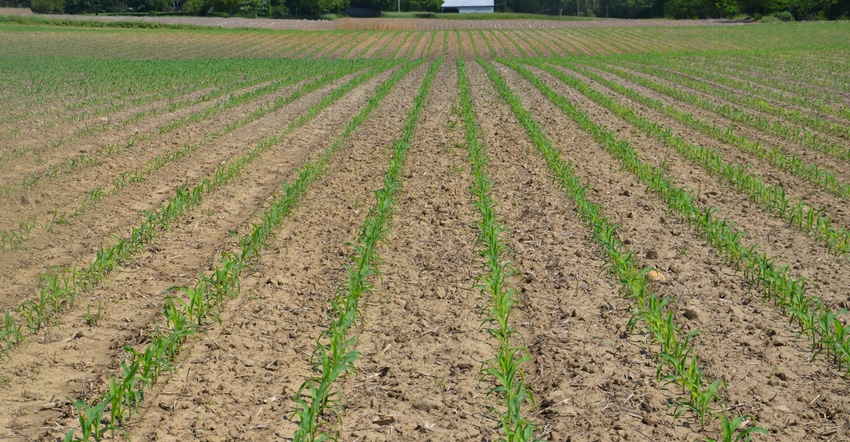
The goal of Corn Watch ’19 is to follow one field and use it as a guide for what you can expect in your cornfields. Dave Nanda provides observations and insight into crop development. This may turn out to be a challenging year to match what’s happening in the Corn Watch ’19 field with what’s happening in your fields.
That’s because of planting delays, Nanda notes. He is director of genetics for Seed Genetics-Direct. That company sponsors Corn Watch ’19.
For example, at press time, percentages of corn planted in Indiana and Illinois were approaching or setting historic lows. Yet even within those states, areas that missed a storm here or a shower there had corn planted if not early, at least in mid-May. Those fields have emerged, and the growing point could even be nearing ground level by the time you read this article.
Meanwhile, the field designated as the Corn Watch ’19 field likely isn’t even planted yet. If it is, planting happened only within the past few days. There’s a possibility it might not be planted to corn if rains continue, although the operators want to plant corn.
Several factors will weigh on any farmer’s decision as the June 5 prevented planting date for crop insurance arrives. How much you already have invested in land rent and fertilizer applied may factor in. Projected price of corn could play a role. The potential impact of a lower yield on your crop history for crop insurance purposes may also come into the mix. Even the USDA mitigation program, which requires a crop be planted, becomes a factor. Each one of you will make that decision based on what’s best for your farm.
Corn Watch continues
Regardless of how the intended Corn Watch ’19 field turns out, you will continue to see Corn Watch articles this year. There is corn growing in the eastern Corn Belt, and Nanda will offer his observations based on what you might be seeing week to week. He will observe real fields. The current plan is that these observations will be from the intended field, which will be planted late. If that’s the case, you will get a firsthand look at how a late-planted crop develops.
One thing that happens is plants speed up maturity processes to reach black layer faster. Bob Nielsen at Purdue University and Peter Thomison at Ohio State University documented that several years ago. It’s been a key consideration this year as some determine whether to stay with the hybrid maturity they originally selected or opt for earlier-maturity corn.
The researchers found that the process picks up steam as the hybrid moves into later stages of development. That’s one phenomenon that this topsy-turvy season will allow Nanda and others to study further.
Nielsen has noted that the rate of maturity could vary somewhat by hybrid. If there is a field with more than one hybrid to observe, it will be interesting to see if any differences are noted in how quickly things like pollination and denting occur.
No matter when you planted or plant in 2019, expect to learn from Corn Watch ’19.
About the Author(s)
You May Also Like




